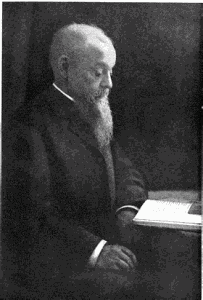Over a century ago, economist Vilfredo Pareto introduced the Pareto Principle, a practical observation that 80 percent of results are driven by 20 percent of the efforts. The principle applies to many aspects of our professional and personal lives, from customer revenue/profitability, to personal income, improvement opportunities, and even in nature. [See strategic & tactical- Enterprise Improvement]
 If the right action is to focus on the “critical few,” what’s a leader to do with the remaining 80 percent? Few businesses are willing to cede the largest portion of their customer base to the competition, yet when it comes to improvement opportunities, many organizations devote scarce resources and senior management attention to strategic initiatives at the expense of the majority of opportunities and employees.
If the right action is to focus on the “critical few,” what’s a leader to do with the remaining 80 percent? Few businesses are willing to cede the largest portion of their customer base to the competition, yet when it comes to improvement opportunities, many organizations devote scarce resources and senior management attention to strategic initiatives at the expense of the majority of opportunities and employees.
The insight gained through Pareto Analysis is that groups of customers or improvement opportunities are different, and therefore must be managed differently. While an organization may already know which actions to undertake, Pareto analysis helps identify how to undertake them.
Both “strategic” and “tactical” improvements share core principles. Too often, organizations overlook this similarity and treat them differently. For big strategic projects, they create elite silos of people and activity, sacrificing broad participation for expediency, and sinking too much management time into the project. For small, tactical projects, they fail to pay enough attention because they perceive them as lower value. Employees fail to engage with the effort and the project simply falls off the radar screens of senior management. Neither methodology works well, so both strategic and tactical initiatives suffer and fall short of expectations, resulting in delayed implementation, lack of adoption, unintended consequences, non-sustainability, and scant capability developed to apply to future efforts.
While strategic and tactical projects need to be managed with regard for their size and potential impact, both need to incorporate a common, rigorous process for performance improvement that is endorsed by the entire organization. One recent survey indicates that only 27 percent of large enterprises even have a defined process.
We believe that efforts at both ends of the Pareto distribution depend upon common concepts, primarily broad participation, engagement, and contribution by the organization. We recognize that the business benefits when it can effectively address both strategic and tactical opportunities within a common framework for change.
Applying time-tested change management principles in conjunction with emerging collaborative tools allows us to maintain leadership involvement and commitment across diverse opportunities, while enabling more efficient use of management time, generating broader engagement within the organization, and building internal capacity for change that can accelerate realization of future opportunities.







